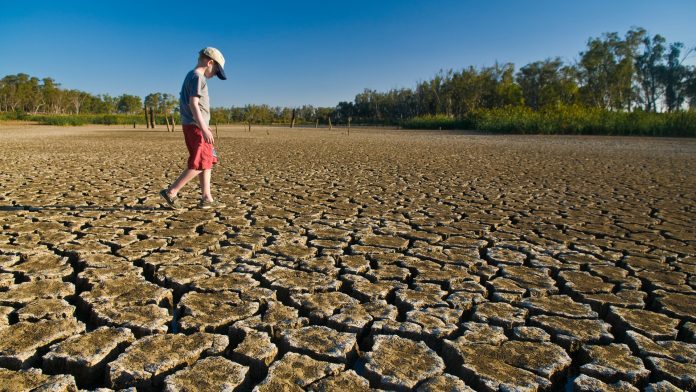
UNICEF research has estimated that by 2050, every child in the world will face being exposed to worsening heatwaves.
The new report ‘The Coldest Year Of The Rest Of Their Lives: Protecting Children From The Escalating Impacts Of Heatwaves’ found that at least half a billion children are already exposed to a high number of heatwaves, and this number could grow to 2.02 billion by 2050.
The new research reveals that, even at lower levels of global heating, more regular heatwaves will be unavoidable for children around the world. The research was a collaborative process between The Data for Children Collaborative, which involved the University of Stirling Professor of Social Work, Lena Dominelli, and academics at the Universities of Edinburgh and Southampton.
“The mercury is rising, and so are the impacts on children,” UNICEF Executive Director Catherine Russell said. “Already, one in three children live in countries that face extremely high temperatures, and almost one in four children are exposed to high heatwave frequency, and it is only going to get worse. More children will be impacted by longer, hotter, and more frequent heatwaves over the next 30 years, threatening their health and well-being.
“How devastating these changes will depend on the actions we take now. At a minimum, governments must urgently limit global heating to 1.5 degrees Celsius and double adaptation funding by 2025. This is the only way to save children’s lives and futures – and the future of the planet.”
Heatwaves are damaging to children’s health
Heatwaves are detrimental to children, as they are less able to regulate their body temperature compared to adults. Furthermore, children exposed to regular heat waves have a greater chance of health problems such as chronic respiratory conditions, asthma, and cardiovascular diseases.
Babies and young children are at the greatest risk of heat-related mortality.
Additionally, heat waves have an overtly damaging effect on other parts of children’s lives. This includes affecting their environment, safety, nutrition and access to water, their education, and future livelihood.
Almost two billion children will be affected by weather changes
The report revealed that high heatwave duration currently impacts 538 million children globally. This number will rise to 1.6 billion in 2050 at 1.7 degrees warming and 1.9 million children at 2.4 degrees warming, highlighting the urgent need for environmental interventions that will mitigate this.
Even more children will be consequently impacted by high heatwave severity and extremely high temperatures depending on the degree of global heating reached. Children in northern regions, especially Europe, will face dramatic changes in the high severity of heatwaves and, by 2050, almost half of all children in Africa and Asia will face sustained exposure to extremely high temperatures.
“The climate shocks of 2022 provided a strong wake-up call about the increasing danger hurtling towards us,” said Vanessa Nakate, climate activist and UNICEF Goodwill Ambassador. “Heatwaves are a clear example. As hot as this year has been in almost every corner of the world, it will likely be the coldest year of the rest of our lives. The dial is being turned up on our planet, and yet our world leaders haven’t begun to sweat. The only option is for us to continue to turn up the heat – on them – to correct the course we are on. World leaders must do this at COP27 for children everywhere, but especially the most vulnerable children in the most affected places. Unless they take action, and soon, this report makes it clear that heatwaves will become even harsher than they are already destined to be.”
























